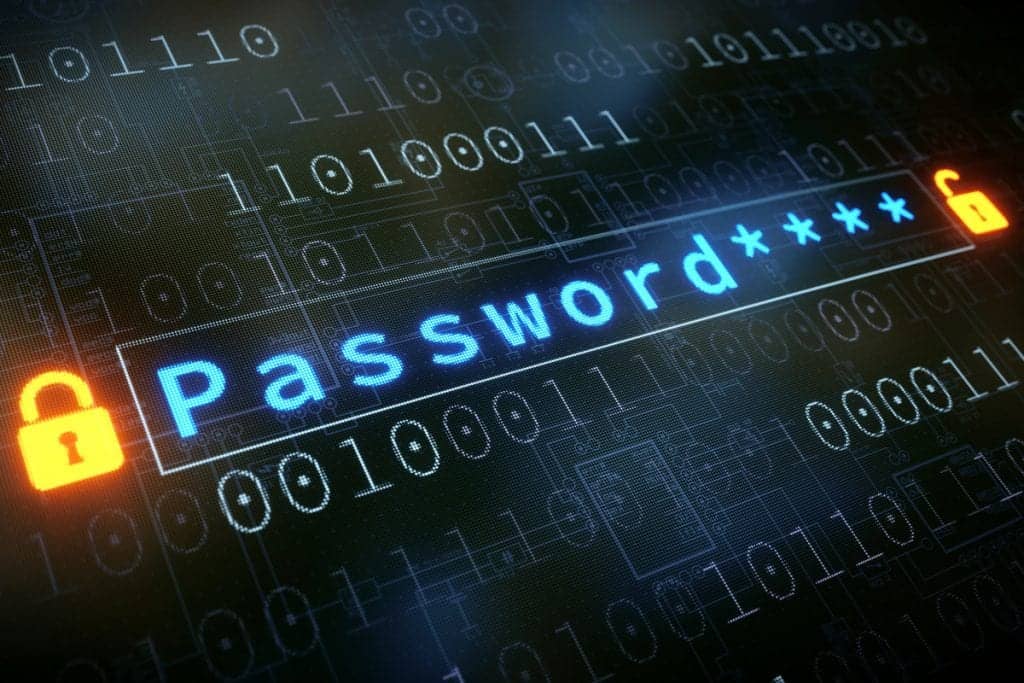Cybersecurity threats have evolved beyond traditional network boundaries. Conventional security approaches that rely on firewalls and VPNs are no longer enough to protect your business data and systems. With remote work, cloud applications, and sophisticated cyber attacks becoming commonplace, businesses need a more robust security strategy.
The traditional “castle-and-moat” security model is failing modern businesses. When a threat actor bypasses your perimeter defenses, they often gain unrestricted access to move laterally within your network—potentially compromising critical systems and data before you even detect their presence.
Our expert cybersecurity solutions can help your business implement a zero-trust approach that protects your assets regardless of network location.
What is a zero trust security model?
The zero-trust security model is a modern cybersecurity strategy that requires every user, device, and connection to be continuously verified—regardless of their location inside or outside the network.
⚖️ Our team aligns our recommendations with NIST 800-207 Zero Trust Architecture, ensuring your security strategy follows federal standards. Unlike traditional perimeter-based security that trusts everything inside the network, zero trust implements continuous verification at every access point.
How does zero trust work: 7 principles of zero trust security
1. Verify explicitly
Zero trust requires verification of all users, devices, and services trying to access resources. This verification happens regardless of location—whether inside or outside your corporate network.
Authentication isn’t a one-time event but occurs continuously throughout the session. The model combines multiple authentication factors including identity, location, device health, service or workload, data classification, and anomalies to determine authorization.
2. Enforce least-privilege access
In a zero-trust environment, users are given the minimum access privileges needed to perform their specific job functions. This significantly limits potential damage from compromised accounts.
By implementing just-in-time and just-enough-access principles, organizations reduce their attack surface. Access permissions are dynamic and context-aware, adjusting in real-time based on risk factors rather than being static.
3. Assume breach
Zero trust operates on the assumption that breaches have already occurred or will occur. This mindset shifts security focus from prevention alone to detection and response.
With this approach, segmentation becomes critical—limiting an attacker’s ability to move laterally within the network. Security systems continuously monitor for threats and anomalies, ready to respond immediately to suspicious activities.
4. Segment access by users, apps, devices
Network segmentation divides your IT environment into smaller, isolated zones. Each zone requires separate authentication and authorization, preventing attackers from accessing your entire network after compromising a single entry point.
This micro-segmentation approach allows businesses to create security perimeters around specific applications, data types, or user groups. The result is contained risk—even if one segment is compromised, others remain protected.
5. Monitor continuously
Zero trust requires ongoing monitoring of all network traffic, user activities, and system behaviors to identify unusual patterns that might indicate a breach.
Continuous monitoring leverages automation and analytics to detect anomalies in real time. This approach shifts security from periodic assessments to constant vigilance, dramatically reducing the time attackers can operate undetected in your environment.
6. Secure all endpoints
Every device that connects to your network represents a potential entry point for attackers. Zero trust extends security controls to all endpoints, ensuring they meet security requirements before gaining access.
This principle includes validating device health, ensuring proper patch levels, and confirming security tools are operational. Organizations gain visibility into all connected devices while enforcing consistent security policies across the entire technology ecosystem.
7. Automate threat detection & response
Manual security processes can’t keep pace with today’s threat landscape. Zero trust relies on automation to enforce security policies, monitor for anomalies, and respond to incidents.
Automated security controls provide consistent protection while reducing the burden on IT teams. Security platforms continuously analyze behavior patterns, automatically adjusting access permissions based on risk signals and responding to threats without human intervention.
| Zero Trust Principle | Business Benefit |
|---|---|
| Verify Explicitly | Significantly reduces the risk of credential theft and unauthorized access, protecting sensitive business data even if passwords are compromised. |
| Enforce Least-Privilege Access | Minimizes potential damage from breached accounts, containing incidents and reducing their business impact while simplifying compliance reporting. |
| Assume Breach | Creates resilience against inevitable security incidents, reducing downtime and financial losses by limiting damage scope and enabling faster recovery. |
| Segment by Users, Apps, Devices | Enables secure innovation by isolating critical systems from higher-risk environments, allowing businesses to adopt new technologies with controlled risk. |
| Monitor Continuously | Provides early threat detection, dramatically reducing dwell time and associated costs while creating comprehensive audit trails for governance requirements. |
| Secure All Endpoints | Supports flexible work arrangements securely, enabling business continuity regardless of location while reducing risk from BYOD security and IoT devices. |
| Automate Threat Response | Lowers operational security costs through consistent policy enforcement while enabling rapid threat containment without requiring 24/7 security staffing. |
Want to bring these zero trust principles to life in your organization? Contact us today to build a tailored security strategy that proactively protects every user, device, and connection.
Zero trust model security: How it compares to traditional models
Traditional security models operate on the principle of “trust but verify,” focusing primarily on protecting the network perimeter. Once authenticated, users typically receive broad access to network resources based on their credentials alone. This approach creates significant security gaps when that perimeter is breached.
Zero trust, by contrast, follows the “never trust, always verify” principle. It eliminates implicit trust regardless of where the connection originates. Every access request is fully authenticated, authorized, and encrypted before access is granted, with access limited to only the specific resources needed.
| Security Aspect | Traditional Model | Zero Trust Model |
|---|---|---|
| Default access stance | Trust inside, verify outside | Trust nothing, verify everything |
| Network perspective | Protected perimeter | No secure perimeter exists |
| Authentication | Often one-time at login | Continuous throughout session |
| Authorization scope | Broad access after authentication | Least privilege, just-in-time access |
| Connection security | Focus on external traffic | All traffic treated as potentially hostile |
| Device trust | Minimal checks for corporate devices | Continuous device health validation |
| Visibility | Limited insight into internal traffic | Complete visibility across all traffic |
💡Hypothetical Scenario: Imagine a remote employee logging in from their company laptop. In a traditional security model, once they authenticate via VPN, they might gain broad access to multiple systems and databases. If their device is compromised by malware, attackers could potentially exploit this access to move laterally through your network.
With zero trust, even after initial authentication, the employee would only access specific applications needed for their role, with continuous verification of their identity and device security posture.
⚠️ Relying solely on perimeter-based security like firewalls and VPNs leaves your business vulnerable to modern attack methods—especially those that succeed due to employee mistakes. How does human error relate to security risks is a question every organization should ask when evaluating modern security models like zero trust.
Benefits of zero trust architecture
Implementing zero trust offers substantial benefits that address the security challenges of today’s business environment:
- Limits lateral movement: Zero trust restricts attackers’ ability to move freely within your network after breaching an entry point. By requiring verification for each access request, the model contains potential breaches to a limited zone rather than exposing your entire network.
- Reduces breach severity: Segmentation and least-privilege access ensure that compromised accounts can only access a limited set of resources. This significantly reduces the potential impact and damage from security incidents compared to traditional models.
- Supports hybrid/remote work: Zero trust is location-agnostic, providing consistent security regardless of where users connect from. This model naturally accommodates the modern workplace with secure access for employees working from home, public spaces, or the office.
- Simplifies compliance: The granular access controls and comprehensive monitoring inherent in zero trust help organizations meet regulatory requirements. Detailed logs of access attempts and continuous verification support audit processes required by NIST, HIPAA, PCI DSS, and other frameworks.
- Enhances visibility and control: Zero trust provides comprehensive insight into who is accessing what resources and when. This increased visibility helps detect unusual behavior patterns and potential security incidents much earlier than traditional security approaches.
- Improves ransomware defense: By limiting lateral movement and implementing strict application allow-listing, zero trust makes it significantly harder for ransomware to spread throughout your organization. Even if a device is compromised, the infection remains contained.
💡 If you’re evaluating long-term security strategies, explore our Cybersecurity and the Trusted Advisor e-book to understand how modern IT guidance supports Zero Trust adoption.
How to implement zero trust
1. Identify and classify assets
Begin by mapping your organization’s data flows, applications, services, and assets. This creates a comprehensive inventory of what needs protection and helps prioritize your most sensitive resources.
This discovery phase should include identifying shadow IT—unauthorized applications and services that users have implemented outside official channels. Understanding your entire technology ecosystem is essential for developing effective zero trust policies.
2. Define user roles and policies
Create detailed access policies based on user roles, responsibilities, and business requirements. These policies should clearly specify which users need access to which resources under what circumstances.
When developing these policies, follow the principle of least privilege—users should only have access to the specific resources they need to perform their jobs. This minimizes your attack surface and reduces the potential impact of compromised accounts.
3. Enable MFA and endpoint protections
Implement multi-factor authentication (MFA) across all applications and services to verify user identities beyond just passwords. MFA significantly reduces the risk of credential-based attacks.
Deploy endpoint protection on all devices connecting to your network, ensuring they meet security requirements before gaining access. This includes patch management, antivirus, and device health monitoring to maintain a strong security posture.
4. Microsegment the network
Divide your network into isolated security zones based on application types, data sensitivity, and user groups. This segmentation prevents lateral movement if one zone is compromised.
Implement network controls that verify all traffic between segments, not just external connections. This ensures that even internal communications are properly authenticated and authorized before proceeding.
5. Enforce least-privilege access
Review and adjust access permissions continuously, removing unnecessary privileges and implementing just-in-time access where possible. Regular access reviews help identify and eliminate privilege creep.
Consider implementing privileged access management (PAM) solutions for administrative accounts with elevated permissions. These tools provide additional controls and monitoring for your most powerful user accounts.
6. Monitor continuously with analytics
Deploy security monitoring tools that provide visibility across your entire environment. These should analyze user behavior, network traffic, and system activities to detect anomalies.
Implement security information and event management (SIEM) systems that correlate data from multiple sources to identify potential threats. These analytics capabilities are essential for detecting sophisticated attacks that might otherwise go unnoticed.
7. Adjust policies based on real-time insights
Use the data gathered from monitoring and analytics to refine your security policies. This creates a feedback loop that continuously improves your security posture.
Evaluate the effectiveness of your zero trust controls regularly, making adjustments as business needs and threat landscapes evolve. Zero trust is not a one-time project but a continuous process that adapts to new challenges.
📌 Remember that zero trust implementation is a journey, not a destination. Most organizations implement these principles incrementally rather than attempting a complete overhaul of their security infrastructure at once.
💡 Start with protecting your most critical assets and high-risk users—they’re the primary targets for attackers and offer the best return on your security investment.
Ready to get started with zero trust? Contact us today for a tailored security audit and expert strategy built around your organization’s unique risks and goals.
Zero trust network security model in real business environments
Zero trust principles apply across your entire technology ecosystem—from on-premises systems to cloud services, remote access, and mobile devices. For most businesses, this means implementing a hybrid approach that addresses all these environments.
For cloud applications, zero trust involves strong identity management, conditional access policies, and data protection controls. This ensures users only access appropriate cloud resources regardless of their location.
For on-premises systems, micro segmentation and internal firewalls help enforce zero-trust principles between different network zones and applications. This approach treats your internal network with the same skepticism as external connections.
💡Hypothetical Scenario: Consider what happens when an employee tries to access company resources from a personal device at a coffee shop. In a zero trust model, the system would verify the user’s identity with multi-factor authentication, check the security state of their device, analyze the risk of their location, and then grant specific, limited access to only the resources needed—all while continuously monitoring for suspicious behavior.
This dynamic, contextual security approach functions identically whether they’re working from home, in the office, or traveling.
⚖️ Our team helps businesses transition from traditional VPN-based remote access to more secure, granular approaches like Zero Trust Network Access (ZTNA). This technology provides application-specific access rather than network-level access, significantly reducing your attack surface.
When to adopt zero trust and who it’s for
Organizations should consider adopting zero trust when:
- Moving to cloud-based applications and services
- Supporting remote or hybrid work environments
- Facing increased regulatory compliance requirements
- Responding to security incidents or data breaches
- Modernizing legacy IT infrastructure
- Experiencing growth that makes traditional security management unwieldy
While zero trust is often associated with large enterprises, its principles are valuable for organizations of all sizes. Small and medium businesses can implement zero trust incrementally, starting with identity management and least-privilege access.
📌 Warning signs that your current security approach may be insufficient include:
- Difficulty tracking who has access to which resources
- Inability to monitor user activities effectively
- Challenges supporting remote workers securely
- Growing concerns about insider threats
- Increased complexity in managing access controls
Protect your business with CMIT Solutions’ expert cybersecurity solutions
At CMIT Solutions, we understand that implementing zero trust security requires expertise and careful planning. Our team will work with you to assess your current security posture, identify priorities, and develop a roadmap for adopting zero trust principles that align with your business goals and resources.
We offer comprehensive services that support each stage of your zero trust journey, from initial assessment to implementation and ongoing management. Our approach is practical and business-focused, ensuring security enhancements support rather than hinder your operations.
Contact our team today at (800) 399-2648 or online to schedule a consultation and learn how zero trust security can protect your business from evolving cyber threats.
FAQs
What’s the difference between VPN and ZTNA?
VPNs provide network-level access, giving users broad connectivity to network segments once authenticated. Zero Trust Network Access (ZTNA) provides application-specific access instead, connecting users directly to individual applications rather than entire networks.
ZTNA offers significantly better security by limiting lateral movement, providing granular access controls, and continuously verifying user and device security. Unlike VPNs, ZTNA works seamlessly across cloud, on-premises, and hybrid environments with consistent security policies, regardless of location.
What are the cons of a zero trust network?
Implementing zero trust requires careful planning. Potential challenges include greater complexity, initial productivity impacts during transition, and integration issues with legacy systems not designed for granular authentication.
Zero trust also requires significant investment in tools, training, and process changes. The implementation journey can be lengthy, especially for organizations with complex environments or limited security resources. However, these challenges are typically outweighed by the substantial security benefits.
Do I need to replace all my current security tools to adopt zero trust?
No, zero trust implementation typically builds upon existing security investments rather than replacing them entirely. Most organizations adopt a phased approach that leverages and enhances current tools while gradually adding new capabilities.
Your existing identity management, endpoint protection, and monitoring tools can become components of your zero trust architecture. The key is integrating these tools with new capabilities like micro segmentation and continuous verification to create a comprehensive security framework.
How do I know if my business is ready for a zero trust model?
Your business is ready for zero trust if you have basic security foundations in place, including identity management, network visibility, and endpoint protection. You should also have a clear understanding of your most critical assets and the ability to monitor user access.
Readiness also depends on organizational factors like executive support, security awareness, and willingness to adjust business processes. Zero trust represents a significant shift in security philosophy, so change management capabilities are important for successful implementation.
What are the biggest challenges companies face when switching to zero trust?
The most common challenges include resistance to new security procedures, integration issues with legacy applications, and difficulty balancing security with user experience. Many organizations also struggle with incomplete asset inventories and unclear data flows.
Technical debt in the form of outdated systems can complicate zero trust implementation, as can siloed security tools that don’t communicate effectively. Overcoming these challenges requires both technical expertise and effective change management practices.
Can zero trust help protect remote and hybrid teams?
Yes, zero trust is particularly well-suited for remote and hybrid work environments. Its core principle—never trust, always verify—applies regardless of user location, providing consistent security for in-office, remote, and mobile workers.
Zero trust moves security controls from network perimeters to users, devices, and applications. This approach directly addresses the security challenges of distributed workforces by focusing on authenticating and authorizing each access request based on multiple contextual factors.
How can CMIT Solutions help my business implement zero trust security?
CMIT Solutions provides end-to-end support for zero trust implementation, including security assessments, strategic planning, technology selection, and deployment services. Our team helps businesses identify their most critical assets and develop appropriate protection strategies.
We offer ongoing management of zero trust technologies, continuous monitoring for security events, and regular policy refinements based on changing business needs. Our approach emphasizes both security effectiveness and operational efficiency, ensuring your zero trust journey delivers tangible business benefits.







